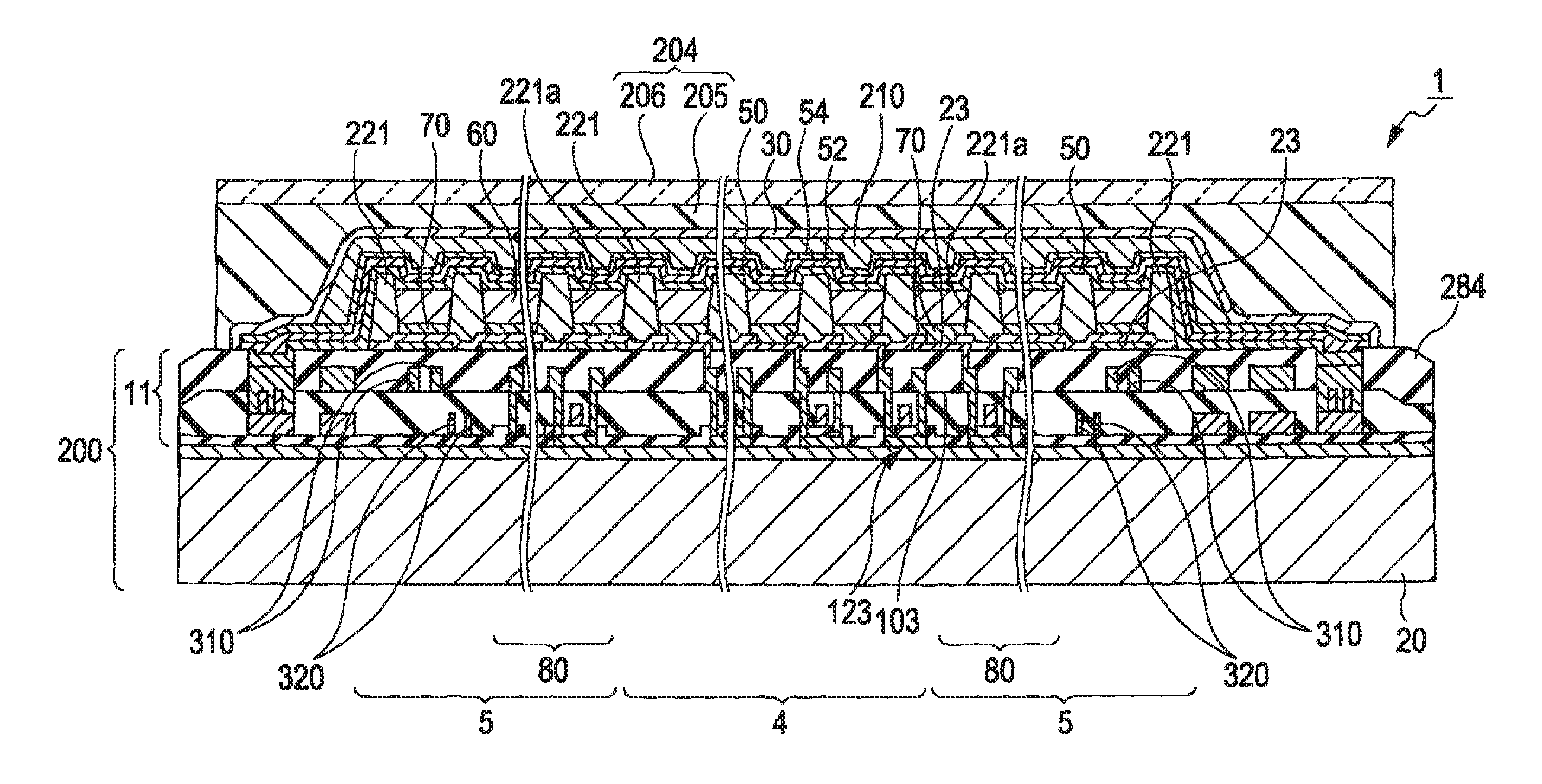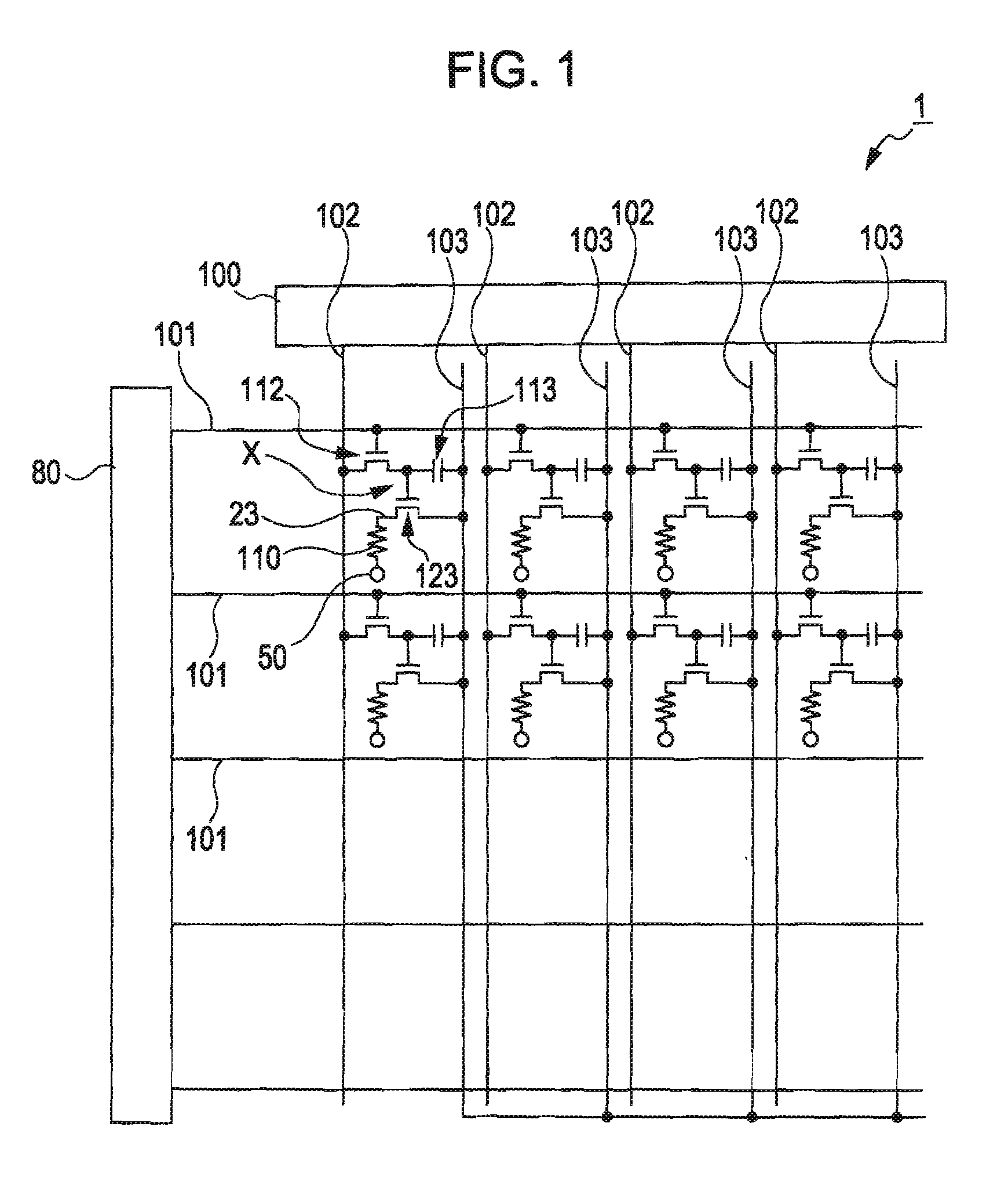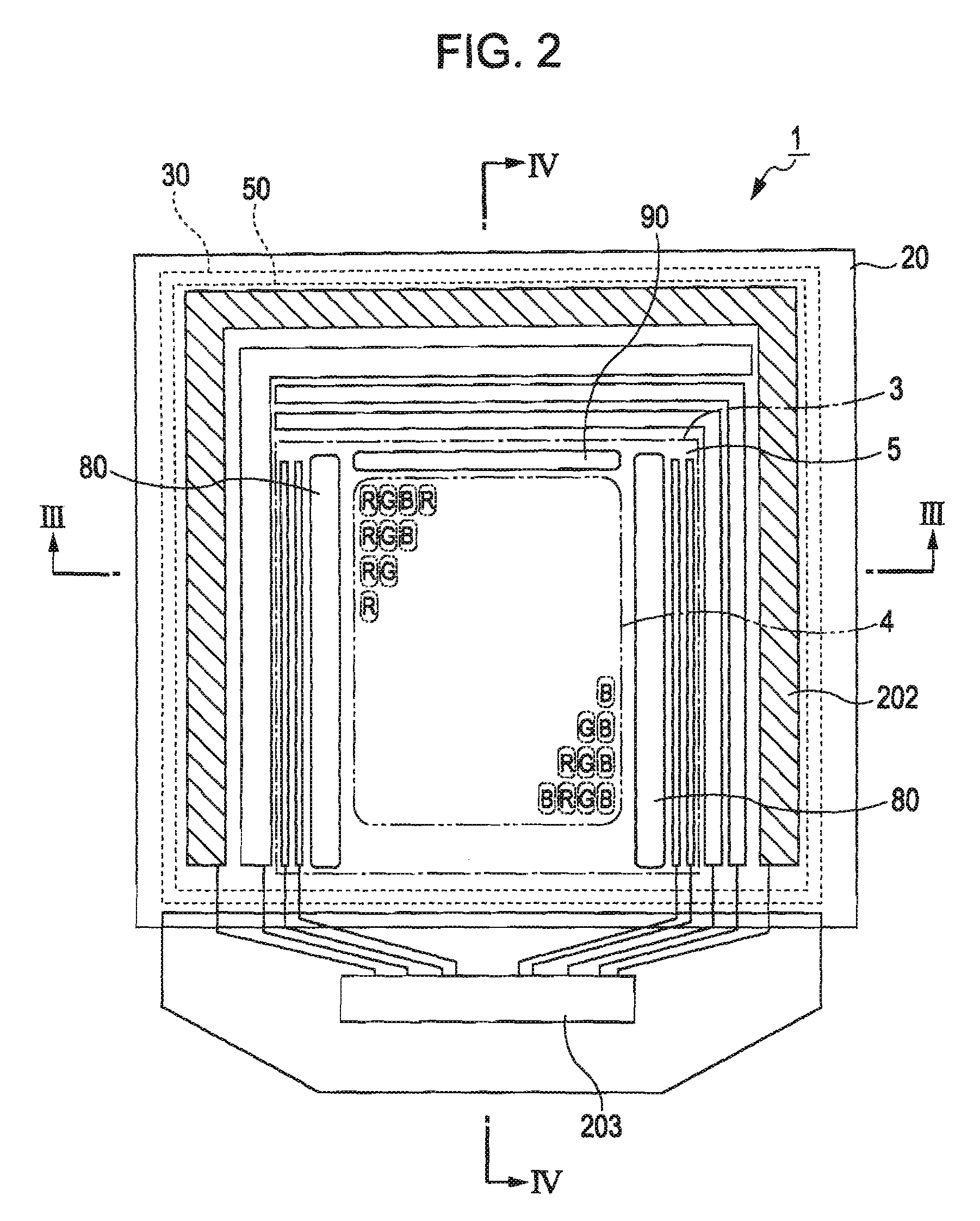Emissive device, process for producing emissive device, and electronic apparatus
a technology of emissive devices and electronic devices, which is applied in the direction of discharge tubes/lamp details, discharge tubes luminescnet screens, electric discharge lamps, etc., can solve the problems of reducing the lifetime reducing the efficiency of the luminescent device, and difficult to prevent the permeation of water and oxygen with the bonded seal alone, so as to improve production efficiency and reduce production costs
- Summary
- Abstract
- Description
- Claims
- Application Information
AI Technical Summary
Benefits of technology
Problems solved by technology
Method used
Image
Examples
first embodiment
[0045]FIG. 1 shows the wiring structure of an EL display 1 according to a first embodiment of the invention.
[0046] The EL display 1 (emissive device) is of an active matrix type including thin-film transistors (hereinafter, referred to as “TFTs”) as switching elements.
[0047] Hereinafter, portions and layers constituting the EL display 1 are shown at different scales so as to be recognizable in the drawings.
[0048] The EL display 1 includes a plurality of scan lines 101; a plurality of signal lines 102 extending perpendicularly to the scan lines 101; a plurality of power lines 103 extending in parallel with the signal lines 102; and pixel regions X disposed in the vicinity of intersections of each scan line 101 and the corresponding signal line 102.
[0049] The signal lines 102 are connected to a data-line-driving circuit 100 including a shift resister, a level shifter, a video line, and an analog switch. The scan lines 101 are connected to a scan-line-driving circuit 80 having a sh...
second embodiment
[0158] An EL display 2 according to a second embodiment of the invention will be described below. In this embodiment, the same elements as the first embodiment are designated using the same reference numerals, and redundant description is not repeated.
[0159]FIG. 9 is a schematic cross-sectional view of the EL display 2 according to the second embodiment of the invention. FIG. 10 is an enlarged view showing an end (peripheral region) of the organic buffer layer 210 in the EL display 2.
[0160] The EL display 2 differs from the EL display 1 according to the first embodiment in that a white-light-emitting layer 60W that emits white light is used as the luminescent layer; and a color filter substrate 207 is used as the surface-protecting substrate.
[0161] Examples of a white-light-emitting organic material include a styrylamine-based luminescent material and an anthracene-based dopamine (blue); and a styrylamine-based luminescent material and a rubrene-based dopamine (yellow).
[0162] A ...
example
[0176] The presence or absence of the occurrence of a defect when the first cathode-protecting layer 52 and the second cathode-protecting layer 54 are disposed on the cathode 50 will be described below.
[0177]FIG. 11 is a table showing the presence or absence of the occurrence of a defect when the first cathode-protecting layer 52 is disposed on the organic banks 221 having a bump of about 3 μm, the luminescent layer 60 covering the organic banks 221 and having a mutilayer structure, and the cathode 50 composed of a magnesium-silver alloy and having a thickness of 10 nm.
[0178] Specifically, the first cathode-protecting layer 52 was formed with any one of the materials described in FIG. 11. When the second cathode-protecting layer 54, the organic buffer layer 210, and the gas barrier layer 30 were laminated, the presence or absence of the occurrence of a defect in the cathode 50 or the second cathode-protecting layer 54 was checked. In particular, whether or not detachment or a crac...
PUM
 Login to View More
Login to View More Abstract
Description
Claims
Application Information
 Login to View More
Login to View More - R&D
- Intellectual Property
- Life Sciences
- Materials
- Tech Scout
- Unparalleled Data Quality
- Higher Quality Content
- 60% Fewer Hallucinations
Browse by: Latest US Patents, China's latest patents, Technical Efficacy Thesaurus, Application Domain, Technology Topic, Popular Technical Reports.
© 2025 PatSnap. All rights reserved.Legal|Privacy policy|Modern Slavery Act Transparency Statement|Sitemap|About US| Contact US: help@patsnap.com



